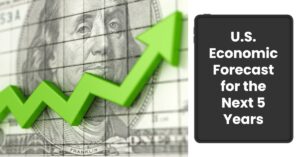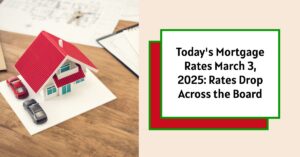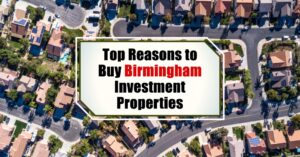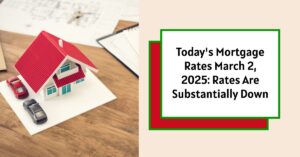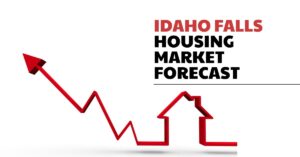Are you trying to peek into the crystal ball and see what the next few years hold for the American economy? I get it. It's a question on everyone's mind, especially with all the ups and downs we've been through lately. So, what's the Economic Forecast for the Next 5 Years? The best guess is that we're looking at moderate growth, hovering around 2% each year. Of course, that's not a hard and fast number, and a lot of different things could push us higher or lower. Let's dive into what's driving these predictions and what to watch out for.
Economic Forecast for the Next 5 Years
Ever wonder what the future holds for your wallet, your job, and the overall economy? Let's be honest, trying to predict the economy is a bit like trying to herd cats, but we can look at the data and make some educated guesses. I'll break it down for you in a way that's easy to understand.
Current Economic Landscape
Right now, in early 2025, the US economy is standing on fairly stable ground. We saw some good growth in the last part of 2024, which is a plus. But, and there's always a but, there are some big question marks hanging over our heads. The biggest? New policies coming from the government, especially when it comes to things like taxes and trade. Imagine it like this: the economy is a car driving down the road. We've got a full tank of gas (that's the good growth), but there are some storm clouds ahead (the uncertain policies).
Forecasted Growth Rates: What the Experts are Saying
So, who's making these predictions about the future? Well, there are a bunch of organizations that spend a lot of time and money trying to figure this stuff out. Here's what a few of them are saying:
- Congressional Budget Office (CBO): They're predicting growth of around 1.9% in 2025, dropping slightly to 1.8% in both 2026 and 2027. They expect that rate to hold steady through 2029.
- Federal Reserve (The Fed): The Fed is a bit more optimistic, forecasting 2.1% growth for 2025, 2.0% for 2026, and 1.9% for 2027.
- Deloitte: Deloitte is the most optimistic of the bunch, suggesting 2.4% growth in 2025, but then a slowdown to 1.7% in 2026. They think we'll bounce back a bit, averaging between 1.9% and 2.1% for the years 2027-2029.
- EY: Similar to Deloitte, EY sees 2.3% growth in 2025 followed by 1.7% in 2026.
Okay, so what does it all mean? If we average all these forecasts together, we get something like this:
- 2025: 2.2%
- 2026: 1.8%
- 2027: 1.9%
- 2028-2029: 1.8%
It's important to remember that these are just averages. Different groups have different ideas about what's going to happen.
What's Driving the Economy? The Key Players
There are a bunch of different things that can push the economy up or down. Here are some of the big ones:
- Monetary Policy: This is what the Federal Reserve does with interest rates. If they raise rates, it can slow down the economy. If they lower rates, it can speed things up. Most experts think the Fed will start cutting rates sometime in mid-2025 to help keep the economy going, but they also want to keep inflation under control.
- Fiscal Policy: This is what the government does with taxes and spending. If the government cuts taxes or spends more money, it can give the economy a boost, but it can also lead to bigger deficits.
- Trade Policies: Trade is all about buying and selling goods and services with other countries. If we put tariffs (taxes) on imports, it can raise prices and hurt trade. On the other hand, new trade deals could help us sell more goods to other countries.
- Labor Market: The labor market is all about jobs. If a lot of people are working, that's generally a good sign for the economy. But, we're also facing some challenges, like an aging population, which could mean fewer people in the workforce.
- Technology: New technology can make us more productive, which helps the economy grow. Things like artificial intelligence (AI) and renewable energy are expected to play a big role in the future.
- Global Economy: What happens in other countries can affect us, too. If other big economies are doing well, that can help us. But, if there are problems in other parts of the world, that can hurt us.
Let's put that into a table for easier understanding.
| Factor | Description | Impact on Economy |
|---|---|---|
| Monetary Policy | Federal Reserve actions on interest rates and money supply. | Lower rates can stimulate growth; higher rates can curb inflation but may slow growth. |
| Fiscal Policy | Government decisions on taxation and spending. | Tax cuts and increased spending can boost growth but may increase deficits. |
| Trade Policies | Regulations and agreements related to international trade, including tariffs and trade deals. | Tariffs can raise prices and reduce trade; trade deals can boost exports. |
| Labor Market | Availability and conditions of the workforce, including employment rates and wage growth. | A strong labor market generally supports economic growth; demographic challenges may slow workforce growth. |
| Technology | Innovation and advancements in areas like AI and renewable energy. | Can drive productivity gains and long-term economic expansion. |
| Global Economy | Economic conditions and events in other countries. | Global recovery can boost the US economy, but geopolitical risks and financial crises can pose threats. |
The Wild Cards: Risks and Uncertainties
Even the smartest experts can't see everything that's coming. There are always risks and uncertainties that could throw the Economic Forecast for the Next 5 Years off course. Here are a few things to keep an eye on:
- Policy Changes: A big change in government policies could have a big impact on the economy, for better or worse.
- Inflation: If inflation stays high, the Fed might have to keep interest rates higher for longer, which could slow down growth.
- Global Shocks: Things like pandemics, wars, or natural disasters could disrupt the economy.
- Financial Instability: Problems in the financial markets, like a stock market crash, could hurt consumer confidence and slow down the economy.
- Productivity Slowdown: If we don't find ways to become more productive, our long-term growth could be limited.
Diving Deeper: A Detailed Look at the Economic Engines
Alright, let's put on our thinking caps and get a little more detailed. To really understand the Economic Forecast for the Next 5 Years, we need to look at some specific areas:
- Monetary Policy in Detail:
- The Fed's Tightrope Walk: The Federal Reserve is in a tricky spot. They want to keep inflation under control (ideally around 2%), but they also don't want to slam the brakes on economic growth.
- Projected Rate Cuts: As of early 2025, the expectation is that the Fed will start to gradually cut interest rates sometime in the middle of the year. The idea is to give the economy a little boost without letting inflation run wild. Some projections have rates falling to the 3.75%-4% range by the end of the year and even lower by early 2028.
- Fiscal Policy and the Federal Budget:
- New Administration Policies: The policies of the current administration could have a big impact. For example, if they extend the Tax Cuts and Jobs Act (TCJA), it could put more money in people's pockets and encourage businesses to invest.
- The Deficit Dilemma: The federal budget deficit (the difference between what the government spends and what it takes in) is projected to be pretty high. This raises concerns about how sustainable our debt is in the long run.
- Trade Wars and Trade Winds:
- Tariff Troubles: Tariffs, like the ones being considered on steel, aluminum, and goods from China, could push up prices for consumers and businesses, potentially slowing down economic growth. Imagine having to pay more for everything you buy – that's the potential impact of tariffs.
- The Hope for Trade Deals: On the other hand, if we can strike some new trade deals with other countries, it could give our exports a boost and create more jobs.
- The Labor Market: A Balancing Act:
- Tight Labor Conditions: The labor market is currently pretty tight, meaning there aren't a lot of people out of work.
- Demographic Challenges: However, we're facing some demographic headwinds. The population is aging, and that could mean slower labor force growth in the years to come. Policies around immigration and deportation could also affect the size of the workforce.
- Tech Innovation: The Productivity Driver:
- AI, Renewables, and the CHIPS Act: Investments in things like artificial intelligence (AI), renewable energy, and manufacturing (thanks to things like the CHIPS Act) are expected to boost productivity. When businesses are more productive, they can produce more goods and services with the same amount of resources, which leads to economic growth.
- The Global Economic Puzzle:
- Global Recovery and Geopolitical Risks: The global economy is expected to recover, but there are also a lot of risks out there, like geopolitical tensions and potential financial crises. Even though the US economy is less dependent on exports than some other countries, what happens in the rest of the world can still have a big impact.
Scenario Planning: What If?
To get a better handle on the uncertainty, it's helpful to think about different scenarios. Here's a simplified look at some possibilities:
- Baseline Scenario (Most Likely): Moderate growth with some tariffs and continued deportations.
- Optimistic Scenario: Stronger growth thanks to tax cuts, trade deals, and less regulation.
- Pessimistic Scenario: A recession caused by high inflation, trade wars, and mass deportations.
These scenarios highlight how different policy choices can lead to very different outcomes.
Consumer Spending and the Housing Market:
- Consumer Strength: Consumer spending is a huge driver of the US economy. How confident people feel about their jobs and finances will play a big role in whether they keep spending money.
- Housing Market Trends: The housing market is also important. We're expecting to see more housing starts (new homes being built), and house prices are expected to continue to grow, although at a slower pace than in recent years.
The Elephant in the Room: Risks and Uncertainties Explored
Let's dig deeper into those risks and uncertainties I mentioned earlier. These are the “what if” scenarios that could really shake things up:
- Policy Paralysis or Radical Shifts: Imagine a situation where the government can't agree on anything, or suddenly makes drastic changes to policies. This kind of uncertainty can spook businesses and investors, leading to slower growth.
- The Inflation Monster Returns: If inflation proves to be more stubborn than expected, the Fed might have to keep interest rates high for longer, which could trigger a recession.
- A Global Crisis Erupts: A major geopolitical conflict, a new pandemic, or a financial meltdown in another country could send shockwaves through the global economy and hurt the US.
- Financial Market Mayhem: A sharp correction in the stock market or other financial markets could damage consumer confidence and reduce investment, leading to slower growth.
- Productivity Stalls: If we don't see continued innovation and improvements in productivity, our long-term growth potential could be limited.
My Thoughts and Expertise
Alright, time for my two cents. After years of following the economy, here’s what I think. The most likely scenario is one of continued moderate growth, but there are definitely some bumps in the road ahead. The biggest risk, in my opinion, is policy uncertainty. We need clear and consistent policies from the government to give businesses and consumers the confidence they need to invest and spend.
I also think we need to focus on boosting productivity. That means investing in education, infrastructure, and research and development. We can't just rely on easy money from the Fed or short-term stimulus from the government. We need to create a sustainable foundation for long-term growth.
Finally, we need to be prepared for the unexpected. The world is a volatile place, and we need to have contingency plans in place to deal with potential shocks.
The Bottom Line: Navigating the Next Five Years
So, what's the Economic Forecast for the Next 5 Years? The best guess is moderate growth, but with plenty of risks and uncertainties along the way. The key will be careful policy management, a focus on boosting productivity, and a willingness to adapt to changing circumstances.
In conclusion, based on current forecasts and trends, the Economic Forecast for the Next 5 Years suggests a steady but moderate growth trajectory for the U.S. economy, averaging around 2% annually. However, this outlook is contingent on navigating various economic drivers, policy decisions, and potential risks.
Secure Your Financial Future with Smart Investments
Wondering about the Economic Forecast for 2025-2029? Stay ahead by investing in turnkey rental properties for long-term financial stability.
Regardless of market shifts, real estate remains a top-performing asset. Let Norada guide you toward profitable, cash-flowing investments.
Speak with our expert investment counselors (No Obligation):
(800) 611-3060
Read More:
- Will the Fed Achieve Its 2% Inflation Target in 2025: The Road Ahead
- Are We in a Recession or Inflation: Forecast for 2025
- Inflation's Impact on Home Prices & Mortgages: What to Expect in 2025
- Interest Rates vs. Inflation: Is the Fed Winning the Fight?
- Is Fed Taming Inflation or Triggering a Housing Crisis?
- Will Inflation Go Down Below 2% in 2025: Economic Forecast
- How To Invest in Real Estate During a Recession?
- Will There Be a Recession in 2025?
- When Will This Recession End?
- Should I Buy a House Now or Wait for Recession?
- How Strong is the US Economy Today?
- Economic Forecast: Will Economy See Brighter Days?
- Will the Economy Recover?
- Is the US Economy Going to Crash: Economic Outlook
- How Close Are We to Total Economic Collapse?
- Is the US Economy Going to Crash: Economic Outlook
- Economic Forecast for Next 10 Years
